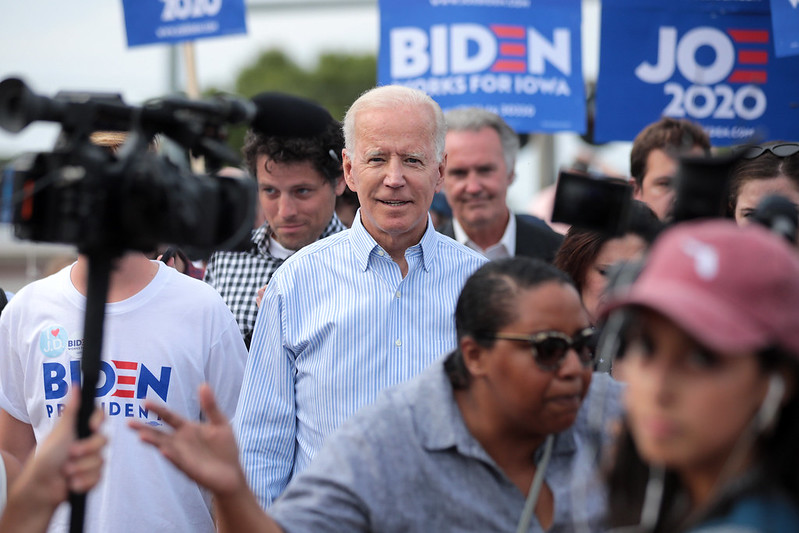
The vast majority of states and localities saw no significant decline in revenues due to the Coronavirus pandemic and do not need the $350 billion bailout passed in President Biden’s $1.9 trillion spending bill.
This is proven in a recent report by Heather Gillers and Peter Santilli in The Wall Street Journal entitled, “States Expected Covid-19 to Bring Widespread Tax Shortfalls. It Didn’t Happen.” This article discusses how states avoided a Great Depression-scale cash crisis, despite dire predictions. The new $350 billion in funding is entirely unnecessary and caters to the needs of blue states with bloated budgets and high taxes.
State Tax Revenues Generally Stayed Flat. Despite the pandemic’s toll on the economy, total state tax revenues generally stayed flat in 2020. According to the WSJ, “combined state tax revenues in 2020 nearly matched revenues from 2019, declining just 0.4%.” By the end of 2020, roughly half of states took in more revenue than in 2019.
In addition, as recently reported by the New York Times, Wisconsin expects to have money to contribute to its rainy-day fund, Maryland has increased its revenue projections, and Minnesota expects a surplus. California is predicting a $26 billion surplus for budget year 2020-21.
Increased revenue occurred for several reasons. For instance, after the worst of the pandemic in the second-quarter of 2020, several states began to see their tax revenues rise again. Idaho and Utah, which attracted remote workers from the West Coast, saw sizeable tax revenue gains. Idaho revenues outpaced 2019 dollars by 11 percent.
Because Covid-19 largely spared higher-income jobs, income tax payments helped propel surpluses in states like Colorado, Vermont, Georgia, Maine, California, Maryland, and Virginia. In Illinois, officials had warned their residents of an upcoming dire shortfall. Instead, personal income taxes outpaced 2019 dollars, so the state’s tax revenue only dropped by 1 percent.
Finally, “a stimulus-fueled stock rally helped protect finance jobs and income and capital gains tax revenues in states like California and New York. In California, a surge of initial public offerings in 2020 has helped total tax revenue grow by 2.5 percent.”
The Federal Government Has Already Put Hundreds of Billions of Dollars Towards State and Local Government Relief. Further, Congress has also already provided aid to states, including approximately $360 billion that directly went to state and local governments to help them respond to Covid-19. Currently, there is $58 billion worth of unspent state and local aid.
In fact, even before the last $900 billion package, lawmakers had provided states and localities with 17 times their 2020 revenue loss and double their expected 2020 and 2021 loss, according to the Heritage Foundation.
Democrat Are Using This Funding to Dictate State Tax Policy. As a condition of accepting the state and local funds, states will be prohibited from lowering taxes.
The bill explains that states “shall not use the funds… to either directly or indirectly offset a reduction in the net tax revenue… from a change in law, regulation, or administrative interpretation during the covered period that reduces any tax (by providing for a reduction in a rate, a rebate, a deduction, a credit, or otherwise) or delays the imposition of any tax or tax increase.”
This prohibition would last through 2024. This is an attempt to prevent state tax competition as Democrat-run states are unable to compete with well run, low-tax states.
Federal Spending is Already at Unsustainable Levels. Moving forward, lawmakers must prioritize responsible spending. Due to Covid-19, the federal budget deficit tripled in the budget year ending on Sept. 30. “The deficit reached $3.1 trillion according to the Treasury Department. That is 16.1% of the country’s total economic output, the most since 1945, when the U.S. was financing massive military operations to help end World War II.”
To put this spending in context, there are 122.8 million families in the U.S. and 79.5 million households, according to the Census Bureau. By either metric, we have spent a significant amount of taxpayer dollars already — $51,500 per family and $33,380 per household has already been spent.
President Biden’s $1.9 trillion plan will spend an additional $15,500 per household or $23,900 per family.
Even former Clinton Treasury Secretary and Obama Chief Economic Adviser Larry Summers has expressed skepticism with Joe Biden’s plan. Writing in The Washington Post, Summers argued that Biden’s stimulus plan is three to six times larger than the economic shortfall and that it will result in wasteful spending that threatens to cause future financial instability and unnecessary inflation.
Eventually, these massive costs will be borne by the American people.
The resilience of state budgets should be evidence enough that the new $350 billion funding is irresponsible and unnecessary. States do not need this money and have already received significant help from the federal government.

